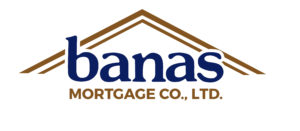 If you are a first time home buyer, one of the biggest challenges is your down payment. To help with this process, I have put together the most comprehensive list of possible down payment sources!
If you are a first time home buyer, one of the biggest challenges is your down payment. To help with this process, I have put together the most comprehensive list of possible down payment sources!
Listed below are 12 different ways to secure a down payment for your home purchase and the documents you’ll need to do it. You can use one or a combination of many!
- Savings/Checking Account – Your two most recent bank statements, may be used to verify savings and checking accounts. If there is a large increase in an account, or the account was recently opened, you must provide the lender a credible explanation and documentation of the source of the funds.
- Cash saved at home – In most cases cash saved at home may not be used for a down payment. However, there can be exceptions. To verify cash saved at home, you must explain in writing;
- How the funds were accumulated and the amount of time it took to accumulate the funds.
- You will have to prove to the lender the reasonableness of the accumulation, based on the following:
- Time period during which the funds were saved, and
- Borrower’s income stream
- Spending habits
- Documented expenses, and
- History of using financial institutions.
- IRAs, Thrift Saving Plans, 401(k) and Keogh Accounts – Up to 60% of the value of assets such as the previously mentioned accounts may be included in the underwriting analysis. Additionally, you may take a loan against your 401k. Generally, you can borrow one-half of your retirement plan balance up to $50,000. (For example, if your 401k balance is $200,000, the maximum amount you can borrow will be $50,000.) To accept the loan, you must typically agree to begin paying back the loan during your next pay period, most commonly done via an automatic deduction from your paycheck.**Note: It is important to check the terms of your 401k before using this option.
- Stocks and Bonds – The lender may use the most recent monthly or quarterly statement provided by their stockbroker or financial institution managing their portfolio to verify the value of stocks and bonds. The borrower’s actual receipt of funds must be verified and documented.
- Savings Bonds – Government-issued bonds are counted at the original purchase price, unless eligibility for redemption and the redemption value are confirmed.
- Gift Funds – In order for funds to be considered a gift, there must be no expected or implied repayment of the funds to the donor by you. An outright gift of the cash investment is acceptable if the donor is:
- Related to you by blood or marriage
- Your employer or labor union
- A charitable organization
- A governmental agency or public entity that has a program providing home ownership assistance to low- and moderate-income families, or first-time home buyers.
You must document any gift funds through a gift letter, signed by you and the donor. The gift letter must:
- Show the donor’s name, address, telephone number
- Specify the dollar amount of the gift, and
- State the nature of the donor’s relationship with you, and
- That no repayment is required.
- Down-payment Assistance Programs – There are several down-payment assistance programs provided by city, county, state or a charitable organization!
- Sale of Personal Property – In order to obtain cash for closing, you may sell various items of personal property, such as (but not limited to):
- Cars
- Recreational vehicles
- Stamps
- Coins
- Baseball card collections
- Sale of Real Estate – The net proceeds from an arms-length sale of a currently owned property may be used for the cash investment on a new house. You must provide a fully executed HUD-1 Settlement Statement as satisfactory evidence of the accrued cash sales proceeds
- Collateralized Loans – You may obtain a loan for the total required investment, as long as satisfactory evidence is provided that the loan is fully secured by assets such as investment accounts or real property. These assets may include stocks, bonds, and real estate other than the property being purchased
- Disaster Relief Grants and Loans – Grants or loans from state or Federal agencies, such as the Federal Emergency Management Agency (FEMA), that provide immediate housing assistance to individuals displaced due to a natural disaster, may be used for your cash investment
- Employer Assistance Plans – The employer may assist you by paying for
- Your closing costs
- Mortgage insurance premiums, or
- Any portion of the cash investment. If you are thinking of buying your first home in New York, start the process by getting pre-approved.
We at Banas Mortgage understand and strive to make the mortgage process easy.
Please call or email me at rbansal@banasmortgage.com or call us at 716-633-5888 (W) or 716-465-4153 (Cell) today to set up a phone or in-person appointment to get started on your home buying process.
About the Author
Raj Bansal (NMLS# 1611630) has received multiple accolades and titles in his time in the mortgage industry. After cultivating a career in the banking system, Bansal is happy to directly assist the Buffalo community as a Mortgage Loan officer at Banas Mortgage Co.




